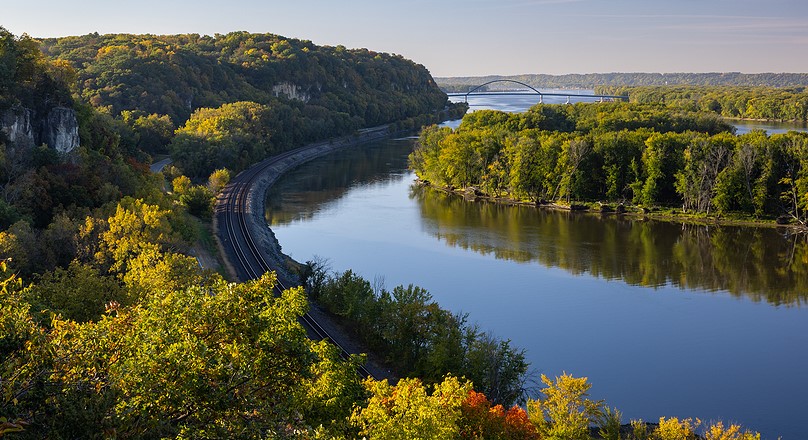News
Saltwater Intrusion & Drinking Water Quality
When it comes to drinking water, there are various sources available that can be drawn from in order to ensure public supply, everything from rivers, lakes and streams to reservoirs, springs and groundwater.
However, one of the most important potable water sources are high quality coastal aquifer systems, which provide freshwater for millions, if not billions, of people all over the world.
And now it seems that these are increasingly being put at risk by rising sea levels and seawater intrusion, with only a tiny amount of seawater entering freshwater sources required to render it undrinkable.
As well as sea level rise, increased groundwater abstraction can also drive further saltwater intrusion in aquifers, which will have the potential knock-on effect of increasing treatment costs or even making subterranean wells unusable. Reduced rainfall, drought and changes in water usage and demand can also have an impact on these resources.
And it’s not just drinking water that can be affected by saline intrusion. In the UK, for example, not only can water quality for human consumption be affected, but also for industrial applications like irrigation and process water.
For those countries already facing water stress and scarcity where desalination technologies may not be suitable for long-term use, saltwater intrusion may become an even bigger problem in the future.
Case Study: The Mississippi River
Towards the end of last month (September), it was reported that an emergency declaration had been signed for New Orleans by mayor LaToya Cantrell amid concerns that saltwater intrusion from the Gulf of Mexico could affect drinking water supplies for thousands of people in as little as a couple of weeks.
According to the Guardian, saltwater has already affected supplies for communities south of New Orleans, leading to water outages at local schools and leaving around 2,000 people without drinking water. As the problem moves upriver, a further 20,000 people in Belle Chasse could be similarly affected.
Part of the issue is that the mouth of the Mississippi is below sea level. And because saltwater is denser than fresh, it is able to flow below freshwater along the river bottom in a wedge shape.
This year has seen water levels along the river plummet for the second consecutive year, with searing heat conditions over the summer months and low rainfall seeing parts of the central US classified as being in extreme drought.
Data from the National Oceanic and Atmospheric Administration and US Geological Survey shows that every water level gauge along almost 400 miles of the river is now at or below the low water threshold.
Drops in water levels will increase the threat of saltwater intrusion, with work now being undertaken to help halt its progression along the waterway. In July, for example, the army was brought in to build an underwater barrier downstream from New Orleans, which should prevent saltwater from reaching the Belle Chasse water intake until October 13th.
However, this appears to be a relatively short-term solution and predicted sea level rises will continue to make the conditions permitting saltwater intrusion into the river more likely as time goes on, with droughts also likely to become longer and more frequent.
All this begs the question…
How can saltwater intrusion be prevented?
The good news is that there is much that can be done to help prevent saline intrusion and safeguard coastal aquifers and other freshwater resources for future generations.
For example, sea walls, dykes and desalination plants can all be constructed to help prevent the sea from encroaching on freshwater supplies, but these are becoming increasingly complicated and more expensive, with some utility companies lacking sufficient funds to get such projects off the ground.
An alternative option is to use distributed water systems that feature advanced sensors and wireless networks to identify spikes in salinity, enabling those involved in water management to use different water sources as and when required.
Other water management processes that could be particularly beneficial include not positioning wells immediately adjacent to coastlines and not drilling down to excessive depths. Not using hydrofracturing in coastal areas can also reduce the risk of making direct connections with the sea below ground.
Aquifer set-up and operation can also have a big impact on reducing risks of intrusion. Conserving water, prioritising water reuse, implementing low water use appliances and irrigation systems can be useful, as can increasing water storage capacity during wetter times of the year for use in drier conditions.
Water leak prevention is another water management technique that can yield positive results, since many intrusion issues arise because of unchecked leaks that then lead to over-abstraction.
One of the most popular ways to control intrusion, however, is the use of hydraulic barriers, such as recharge, abstraction and the combination of abstraction and recharge.
Artificial recharge is a particularly effective technique, where aquifers are recharged with high-quality water such as desalinated water, treated wastewater, extracted groundwater, rainwater or surface water. This recharge maintains the seaward gradient and works to reduce flood flows, raise groundwater levels, store freshwater in aquifers, reduce over-abstraction and improve water quality by suppressing the saline water body.
Because of the costs associated with technology such as desalination, this option is becoming less attractive for artificial recharge. Reduced availability of water on a local level during periods of drought or in places experiencing water stress and scarcity is another restriction that needs to be taken into account.
As such, the use of treated wastewater and other renewable sources is starting to take priority for the mitigation of saltwater intrusion.
Naturally, different regions and different countries will need to find solutions that work for them and their local communities, but something that rings true for everyone is that saltwater intrusion is only going to happen more and more… so it seems like there’s no time like the present to consider how best to address it.
